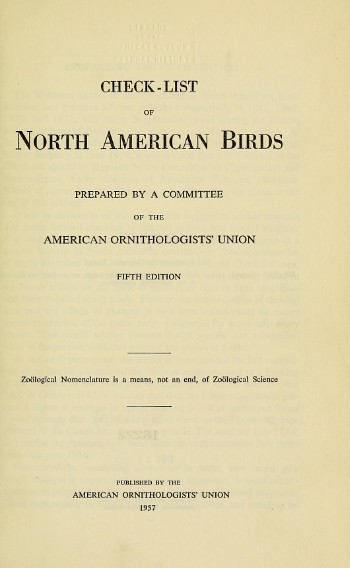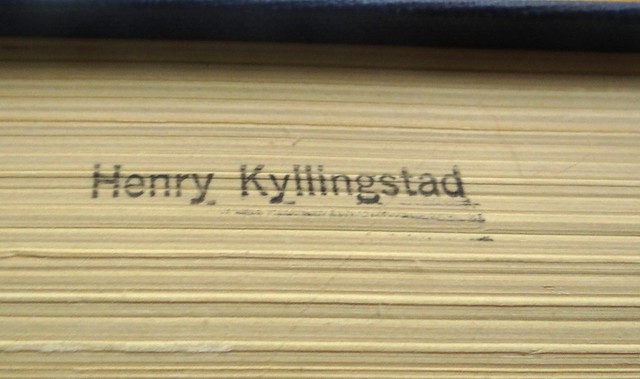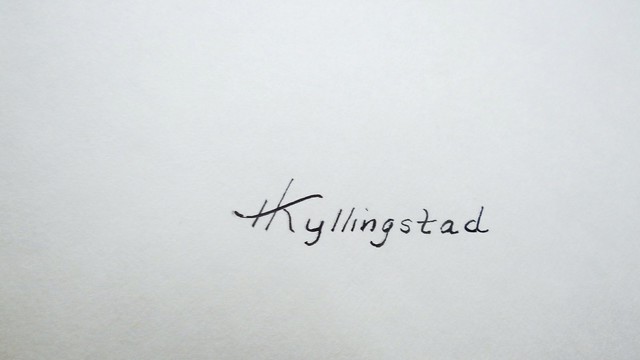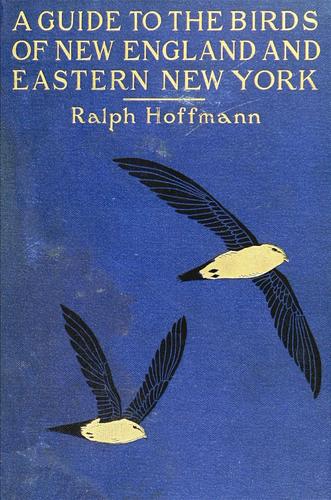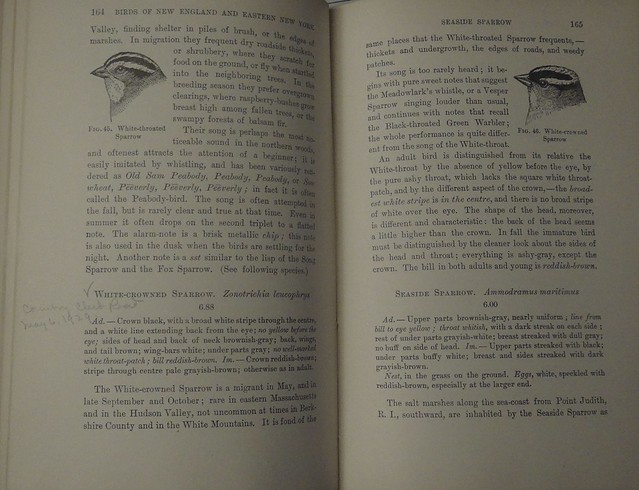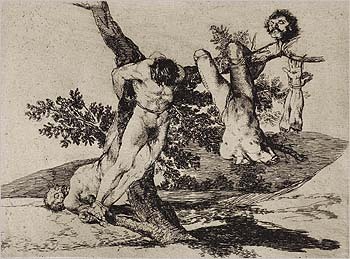It’s a bad habit left over from my days as an academic, I confess, but I still find myself turning eagerly to the acknowledgments when I first open a bird book. Who gets thanked, who doesn’t? Can we distinguish between genuine gratitude, flattery, and bread-and-butter thank you’s? And if we can rise above the level of mere gossip, what do the lists of names tell us about long-vanished communities of birders and ornithologists?

Every birder in this part of the world, and most, I suspect, in other parts, too, know Ludlow Griscom’s Birds of the New York City Region, published by the American Museum in 1923. Replacing Frank Chapman’s 1906 pamphlet, originally published in the AMNH Journal, Griscom’s book quickly became the status and distribution “bible” for an entire important generation of American birders; Roger Peterson and the rest of the Bronx County Bird Club famously “could recite chapter and verse” from their great mentor’s work. But the book is a monument of far more than local importance: it marks the first time in the history of birding that the author of a regional avifauna systematically confronted sight records on a massive, modern scale: “the grand total” of such reports Griscom evaluated for the book “easily passes the enormous sum of one hundred thousand.”
eBirders may be unimpressed by that figure, but remember that those records trickled and poured and washed in on slips of paper — paper! Fortunately, Griscom had time:
…Dr. F.A. Lucas, director of the American Museum … instructed me to prepare a handbook as soon as possible, it having become evident that publication by the Linnaean Society would be unduly protracted …. I should devote my whole time to the preparation of the Handbook….
Ralph W. Tower and Frank Chapman, great names in the history of the Museum, offered their support, as did “all but one of the active members of the Linnaean Society” — I wish I could figure out who was the target of that typically snide Griscomianism. The Linnaean made Griscom Chairman of its Local Avifauna Committee, to which were also named J.T. Nichols (“who,” wrote Griscom, “knows more about Long Island birds than anyone living”), Edmund Janvrin (a young physician who had treated Booker T. Washington in New York), and L.N. Nichols. Roy Latham and Eugene Bicknell (of Catharus renown, and an early champion of the field glass method of birding) contributed important records, as did from New Jersey Waldron Miller, Griscom’s colleague on the Nicaragua journey of 1917. Another of his frequent field companions, Maunsell Crosby, proofread the manuscript; Crosby had been the personal assistant to the great Jonathan Dwight, the owner of a collection of New York area birds that Griscom described as “the best in existence” and which furnished a number of important records for the book.
Put all the names together and you have a fantastic tapestry of relationships, a lively picture of who was who in New York and New Jersey birding in the first quarter of the last century. But here’s a surprising name, one not many of us have heard of:
… my brother, the Rev. Acton Griscom, rendered invaluable service in critically reading the entire book in both galley and page proof.
Ludlow’s brother? Ludlow’s brother the Reverend?
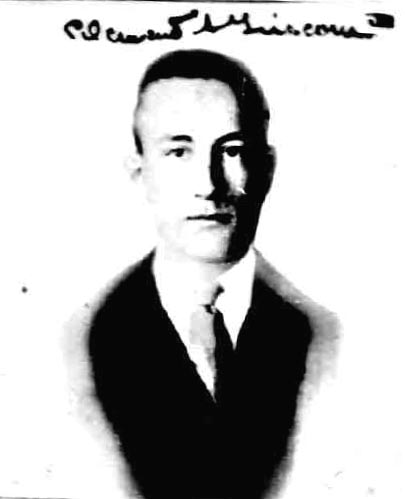
The Griscoms and the Ludlows were wealthy and well-connected, famous members of America’s nineteenth-century gilded upper class. The children’s generation — Ludlow was born in 1890, Acton in 1891, and their sister Joyce, who died in a horrific accident at the age of three, in 1898 — continued to enjoy the wealth, but as if they were characters in a Thomas Mann novel, the industrial vigor and financial assertiveness of their ancestors seemed to drain right out of them. Ludlow became an ornithologist, and Acton — well, it’s not easy to figure out just what Acton did with his life.
The best (and virtually the only) comprehensive source to the life of Ludlow Griscom is William E. Davis, Jr.’s Dean of the Birdwatchers, an excellent history of Griscom the birder and (probably no fault of the author’s) a slender biography of Griscom the human being. Acton, the younger brother, appears a grand total of two times in the book. Davis calls him “something of a black sheep in the family,” noting that he “could never achieve stability,” and quotes at length a 1952 letter from the older brother to Frederick R. Goff :
My brother’s life has been a tragic and unfortunate one, and in recent years has been mostly spent in New Mexico and Venezuela. I know that he has had serious financial reverses and I would be surprised if he had not been forced to sell his library and his manuscripts for whatever sum of money he could obtain.
I haven’t seen the letter, which resides in the collections of Cornell University, but the excerpt here, taken together with the addressee, points us in a very interesting direction. Frederick Goff was one of the greatest of American historians of the book, the Goff of Incunabula in American Libraries and Head of the Rare Book Collection at the Library of Congress. And it turns out that Acton Griscom was an important collector and amateur scholar of the early book.
Acton studied at Columbia, and around 1920, he made a significant gift — not a sale “for whatever sum of money he could obtain” — to his alma mater of nearly two thousand volumes treating of Joan of Arc, among them several fine manuscripts from the fifteenth and sixteenth centuries.
Columbia calls Acton’s gift “one of the outstanding collections in its field in the world.” Other manuscripts from his library can be found among the holdings of other important North American institutions: the University of Illinois owns a thirteenth-century Rule of St. Benedict, the Newberry Library a Nider Reformatio (purchased by Griscom from the estate of John Singer Sargent), Berkeley a Victorine commentary on the Rule of St. Augustine, the Morgan Library a thirteenth-century English Bible.
Fancy stuff, and there was evidently much more. The catalogue of Acton’s private library, published in 1931 (thus after his donation of the Joan of Arc materials to Columbia), runs to 51 printed pages, covering titles in
early printing, chivalry, mysticism and occult, Jeanne d’Arc, English and Romance literatures, etc.; part II general literature including a garner of old, rare and unusual books, early American juveniles, criminology, etcetera.
Catholic tastes indeed. But we know that “chivalry” and “mysticism” combined to form Acton’s principal area of inquiry. His 1917 Columbia M.A. thesis was titled “An Introduction to the Study of Mysticism,” and his scholarly publications dealt with the textual history of the matière de Bretagne — the stories of King Arthur and the Round Table — in high medieval Wales and England.

His serious work reached its high point in 1929 with the publication of an edition of Geoffrey of Monmouth’s Historia regum Britanniae, one of the foundational texts in the Arthurian tradition, to which Griscom appears to have contributed the Latin text and a historical essay. The reviews were not unanimously kind, several critics noting a naivete both philological and historiographic, but all the same, it was decades before this edition was superseded.
Davis, in his biography of the elder Griscom brother, connects the “immense library on Joan of Arc” to the Griscom parents’ “rather bizarre” “strong belief in reincarnation,” hinting that they considered themselves latter-day versions of the fifteenth-century French heroine and of Napoleon. Acton certainly shared his parents’ commitment to theosophy, an interest that seems to have annoyed Ludlow no end. In 1919, Acton presided over his father’s funeral at New York’s Chapel of the Comforter, an institution dedicated to the reconciliation of Christianity and theosophy. Following his father’s death, Acton continued as a frequent contributor to The Theosophical Quarterly, writing articles and reviews and taking an active part in conventions and committee meetings. (Unsurprisingly, the name of Ludlow Griscom appears in the Quarterly precisely never.)
Unlike his older brother, Acton was also interested in politics. In keeping with long family tradition, he was a vocal supporter of women’s rights. In the months after the conclusion of World War I, he spoke and wrote vigorously about the evils of Bolshevism, the intrinsic Frenchness of the Rhineland, and the deceptive wickedness of the German people.
German dishonor is a byword …. the outwardly clean streets of German cities but whited the rottenness within …. “Kultur” was a myth, and … the German people and the German civilization were notably inferior…. Immorality in Germany is literally appalling…. Does the American citizen wish to be friends with such people?
Here speaks, obviously, the Francophilia of America’s upper classes at the turn of the last century, the same small still voice that was heard in 1935 when Acton Griscom married Blanche B. Miller, who had four years earlier taken a graduate degree at Clermont-Ferrand. Ludlow was not in attendance. The wedding announcement describes Acton as “a noted collector of medieval manuscripts … an investment specialist in government bonds with Farrell, Brown, & Co.”
The couple was divorced in Florida in 1943, after which Acton becomes much harder to trace. Just before the divorce, he registered for the draft at the outbreak of World War II, and by the late 1940s, he is in Venezuela, flying once a year to New York for an autumn visit. Thanks to Davis, we know that he was still living in 1959, “when Ludlow’s wayward brother, Acton, knelt before the coffin” at his elder brother’s burial in Mount Auburn.
The negative characterization of Acton Griscom is understandable, I suppose, in a biography necessarily related from the dour older brother’s point of view. But the facts seem to be richer and more complex than the story Davis tells. Even these first, sketchy bits of evidence that good old google reveals are enough to suggest that the story could be told very differently: the story of an older brother who dismissed his parent’s religious explorations, an older brother who married without his mother’s approval, an older brother who spent his talents and his advantages on birds. And Acton? A man of the cloth, the avatar of filial piety, a scholar and a businessman. Who’s the black sheep, the wayward brother now?
Drop me a note in the Comments below if you know more about Acton Griscom.




